
ABOUT SCOTT FRANKLAND
Scott Frankland is Head of Content at Sengerio. His spirit of inquiry leads him to the world of transportation and mobility to connect with the industry’s leading experts and shine a light on the hot topics.
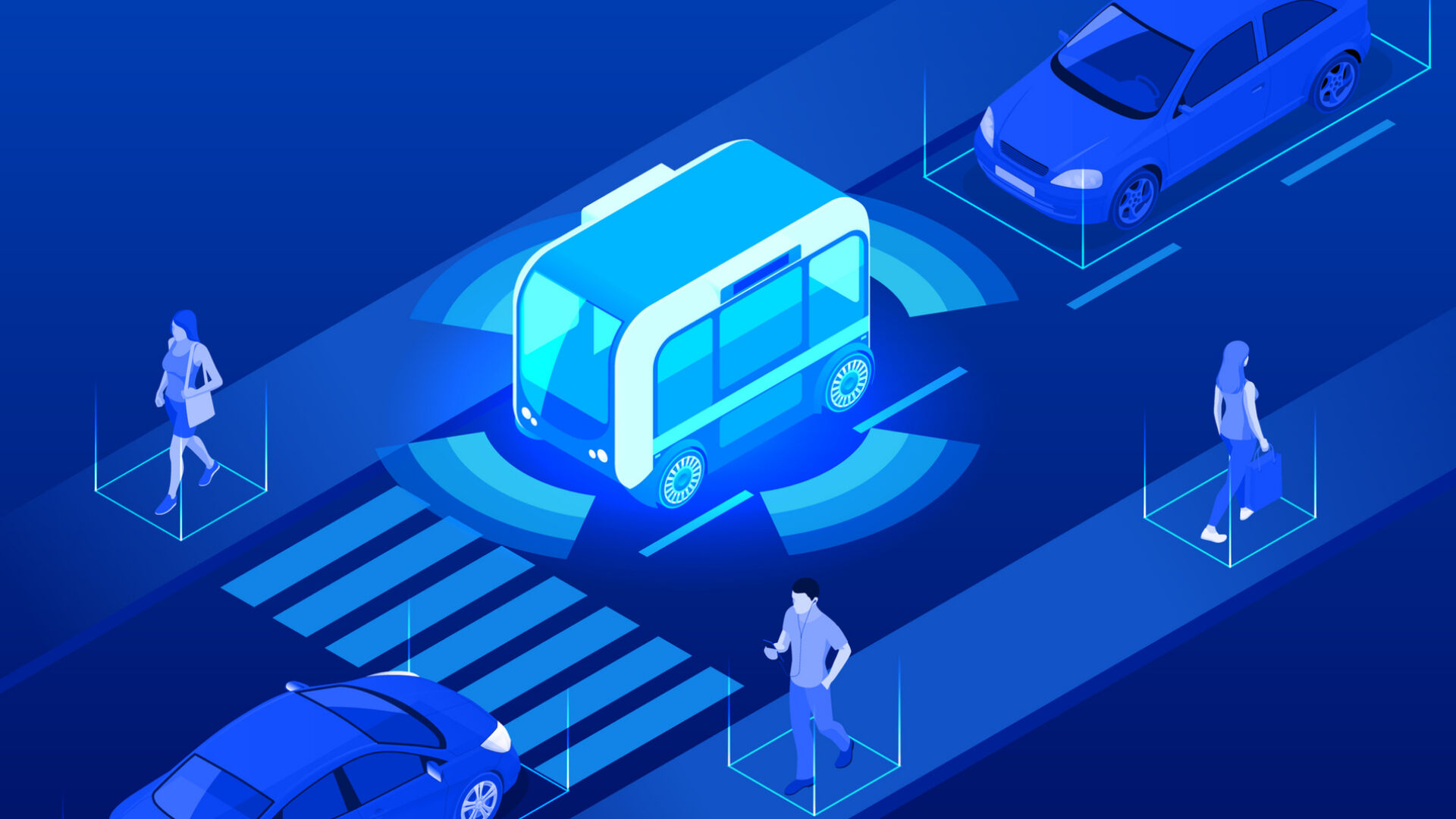
From the greatest science fiction writers like Asimov to simpler depictions such as Astro Boy, we already had in mind the futuristic concept of driverless vehicles that would one day transport us from one part of the city to another.
Which back then, of course, seemed like a distant fantasy.
In recent years, however, the pace of technological advances — particularly that of artificial intelligence (AI) — has been increasing at an incredible speed. Such a high speed that, according to some tech enthusiasts, the resulting technology will eventually overcome the need for control by humans and begin to rapidly transform society.
The precise point where artificial intelligence should surpass the intelligence of a human has been termed the ‘technological singularity’.

Whether you interpret this idea optimistically or can’t help but compare the thought to the Matrix, we can’t pretend that AI isn’t making huge progress in catching up to the capabilities of the human mind.
Thanks to the rise of solutions such as Chat GPT, we’re already witnessing how AI is shaping the future of certain sectors like translation and linguistics.
What about the future of transport? If AI were to rapidly transform our cities, transportation would undoubtedly be affected by such transformations. We’ve already seen how AI is being implemented to optimize transport systems.
This technology is set to become increasingly widespread. According to an article by World Economic Forum, more than half of the vehicles on the roads are expected to have a certain degree of autonomy by 2025.
In addition, with more and more autonomous buses being introduced into public transport networks, we may even ponder the question:
Are we heading toward the singularity of public transportation, or is the idea simply fiction?
In this article, Sengerio explores what the introduction of autonomous buses means for transport and mobility networks, including the advantages and limitations they bring to the table.
— But first, let's have a look at some of the technology that goes into an autonomous vehicle!
The first concept of an autonomous vehicle dates back to the 1939 General Motors exposition also known as "Futurama."
Norman Bel Geddes, American architect and designer, unveiled the first self-driving car design, an electric vehicle driven by radio-controlled electromagnetic fields generated by magnetized metal spikes inserted into the roadway.
In 1958, General Motors turned this concept into reality. The front end of the car was equipped with sensors called pickup coils that could detect current flowing through a wire embedded in the roadway. The current could be manipulated to make the steering wheel move left or right.

A few decades later, in 1977, the Japanese developed a camera system that provided data to a computer to process road images. However, this vehicle had a speed limit of 20 mph (about 32 km/h). Then came along the German pioneer, Ernst Dickmanns, who greatly improved the efficiency of their VaMoRs, which had autonomous driving capabilities and could travel up to 56 mph (about 90 km/h).
Thanks to these technological advances, self-driving vehicles have become faster and more accurate in their perception of and response to their surroundings.
Today, autonomous vehicles use a combination of hardware and software systems.
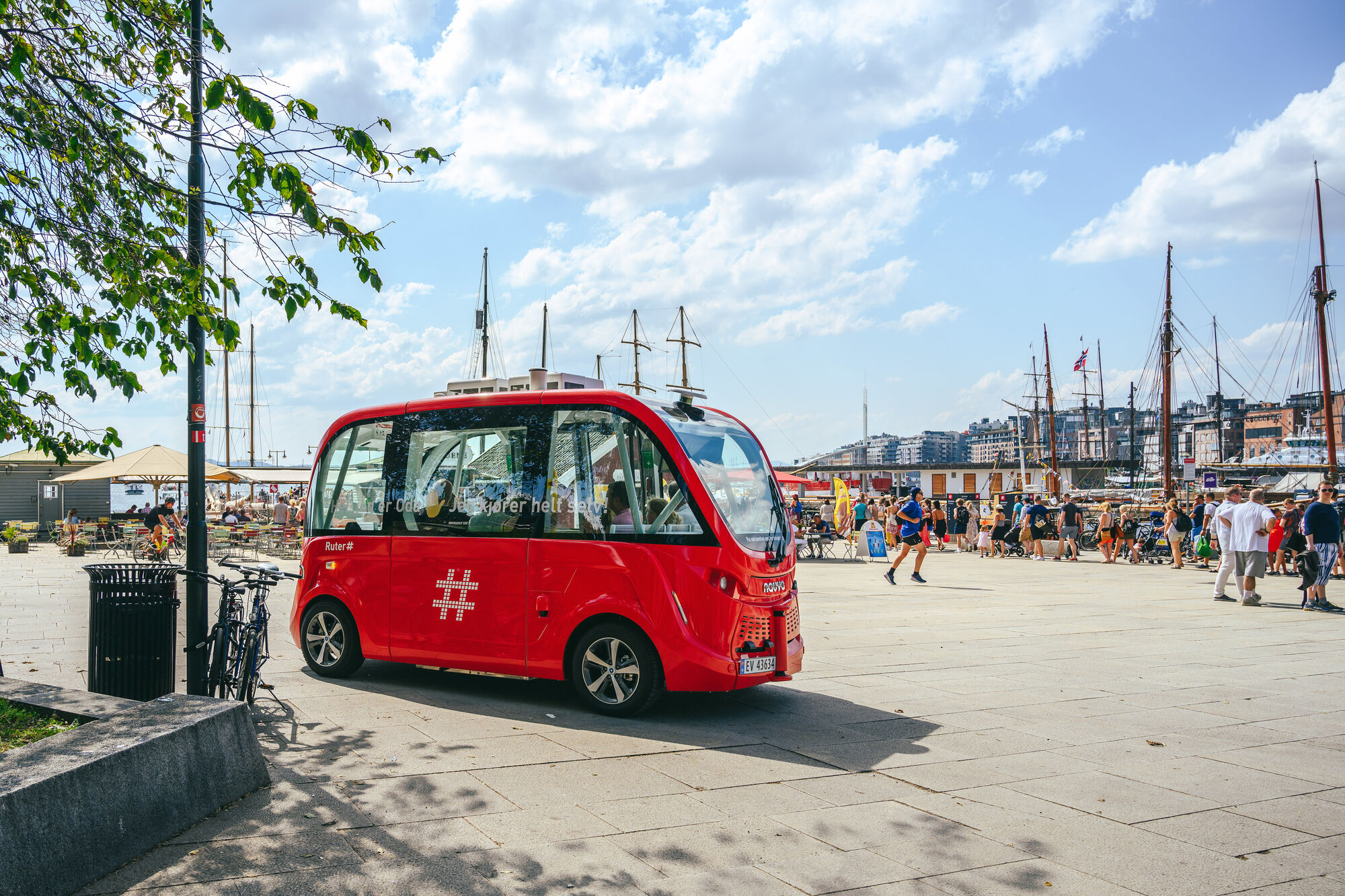
These hardware components include cameras, LIDAR sensors, radar, and GPS systems, which are used to collect information about the vehicle's surroundings.
These data are then processed by software algorithms that use machine learning, computer vision, and artificial intelligence techniques to make decisions about the vehicle's movement and behavior.
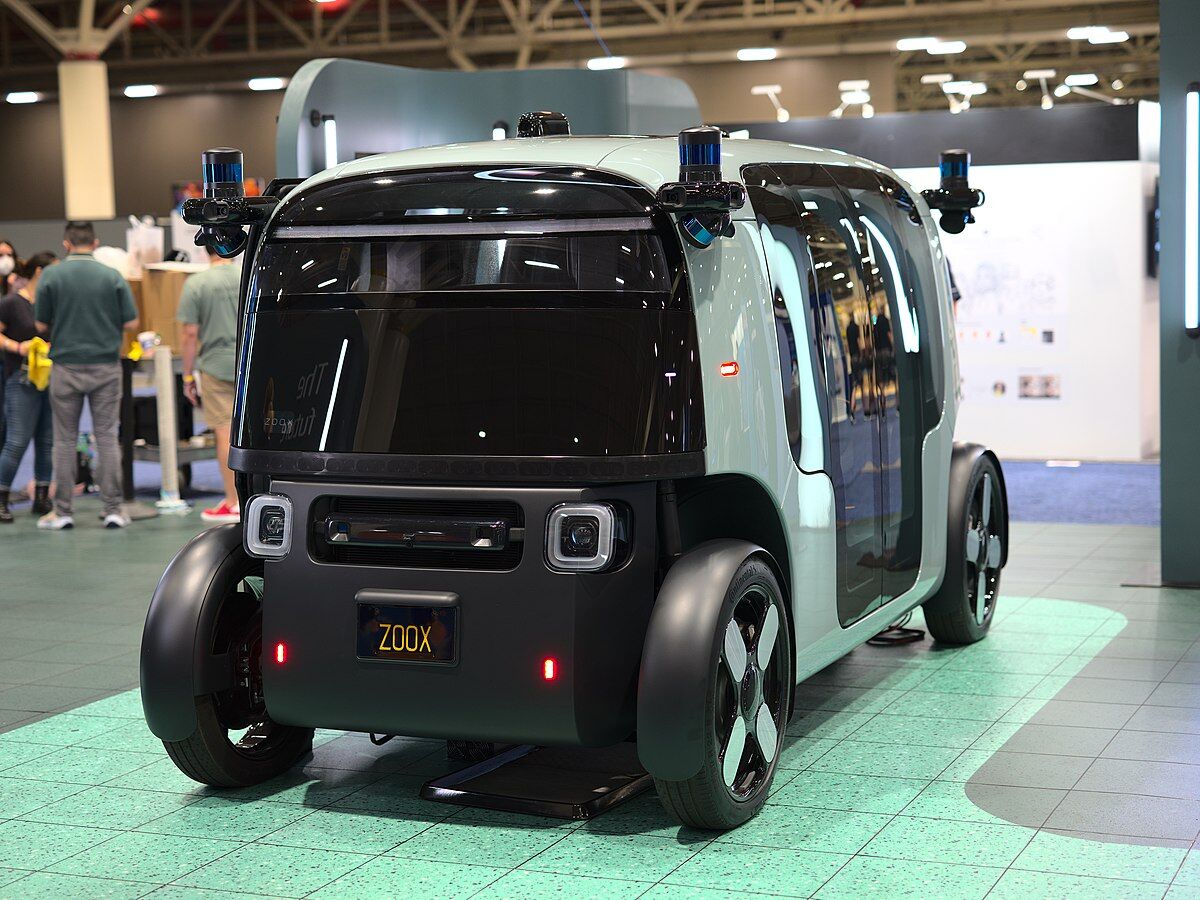
The introduction of autonomous buses on our roads offers an array of positive changes for urban areas, operators, transportation companies, and most importantly, its users.
Thanks to the state-of-the-art fleets, utilizing the technological achievements of decades of research will enable operators to maximize their resources to help transportation companies. In turn, we can expect autonomous solutions to prioritize reducing emissions, making the roads safer, and improving the overall passenger experience.
But the advantages don’t stop there! Let's take a closer look to better understand how we can benefit from these new technologies.
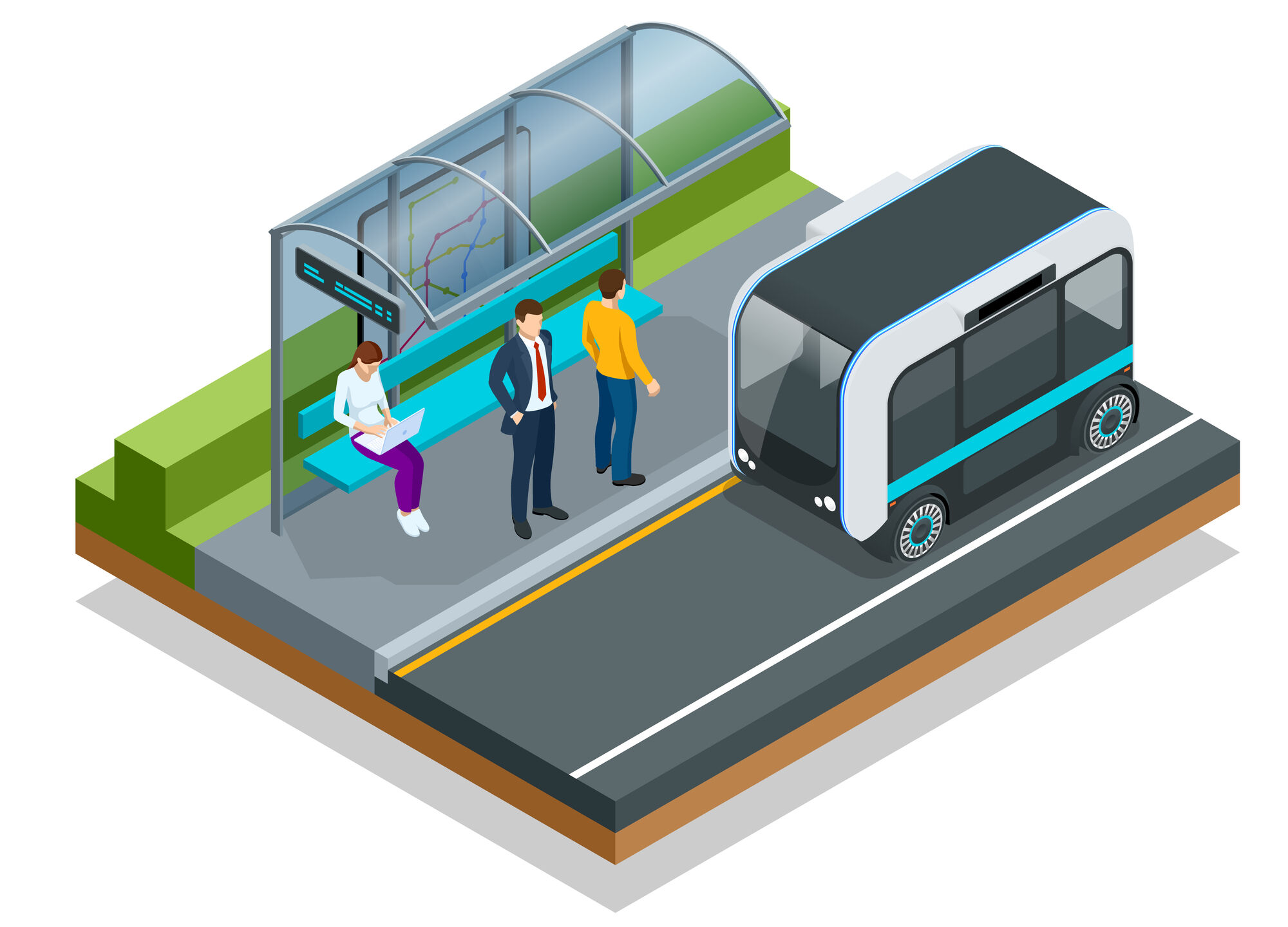
In a previous Sengerio article, we looked at the evolution of Mobility-as-a-Service (MaaS) and how it is able to integrate all available mobility options to provide optimized solutions to its users with the use of an app.
This means that for users, MaaS reshapes the way they access mobility by enabling them to plan, book, and pay for their services using a generic combination of solutions.
In a nutshell, MaaS creates a vast network of mobility networks, including first/last mile solutions, providing the ubiquitous connectivity needed to support a wide variety of mobility models so that they are practical, easy to use, and frictionless.
The addition of autonomous buses into the existing ecosystem will be a huge advance for mobility networks and MaaS. More specifically, we are entering the phase of AMaaS — that is, Autonomous Mobility as a Service.
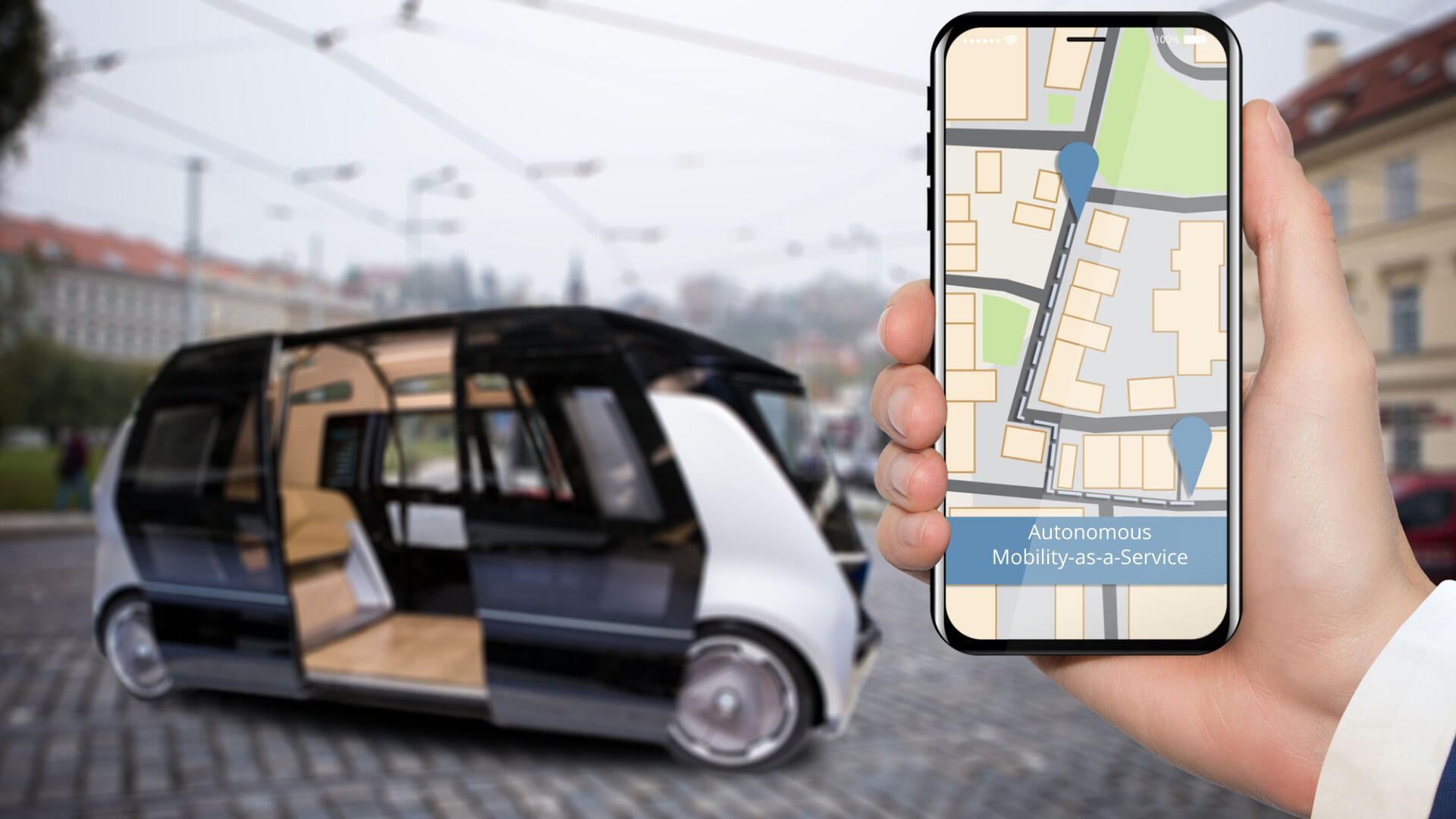
This year we have already seen the promising partnership between automotive experts, ZF, with its network of driverless electric shuttles, and specialists in the American shared mobility network, Beep.
ZF is in the process of unveiling its huge breakthroughs with the production of Level 4 autonomous shuttles that can carry up to 22 passengers and will be able to operate 24 hours a day, if needed, on predetermined and non-determined routes. These shuttles will be planned and operated by Beep to offer its services to passengers from public and private communities.
In Europe, French public transport group Transdev continues to develop solutions to support transport operators in operating autonomous vehicles within their networks.
In 2022, the company began its partnership with MaaS providers, Mobileye, and AV manufacturers, Lohr, to expand the public transport network using autonomous solutions. Road tests were completed last year, and the partnership's first commercial services are expected to be introduced this year.
We can expect that in the upcoming year or so, more partnerships between mobility operators and autonomous vehicle providers to expand mobility networks and make public transport more accessible and efficient for its users.
The integration of artificial intelligence (AI) into autonomous buses brings a number of benefits to operators, including better management of fleets, services, and even traffic.
With the use of AI, autonomous buses are equipped with advanced navigation systems and traffic sensors, which allow them to communicate with each other and with other vehicles, creating a network of connected vehicles that work together to optimize traffic management, reduce congestion, and improve overall mobility.
Not only that, autonomous fleets can also optimize their driving patterns and speed to reduce fuel consumption and emissions, resulting in a more sustainable and environmentally friendly form of transportation.
As a result, traffic management is much easier for transport operators and companies, who can make their services greener (through reduced traffic and emissions), more energy efficient, and more punctual.
But the advantages don’t stop there — there are numerous other ways in which operators and transport companies can reduce costs and safety.
One example is the integration of AI can prevent bus malfunctions. For example, the startup Preteckt focuses on maintenance optimization through the use of AI to increase fleet availability and safety. Their algorithms can detect any irregularities by contextually evaluating all data-such as motion analysis, outside temperature, and even bus crowding.
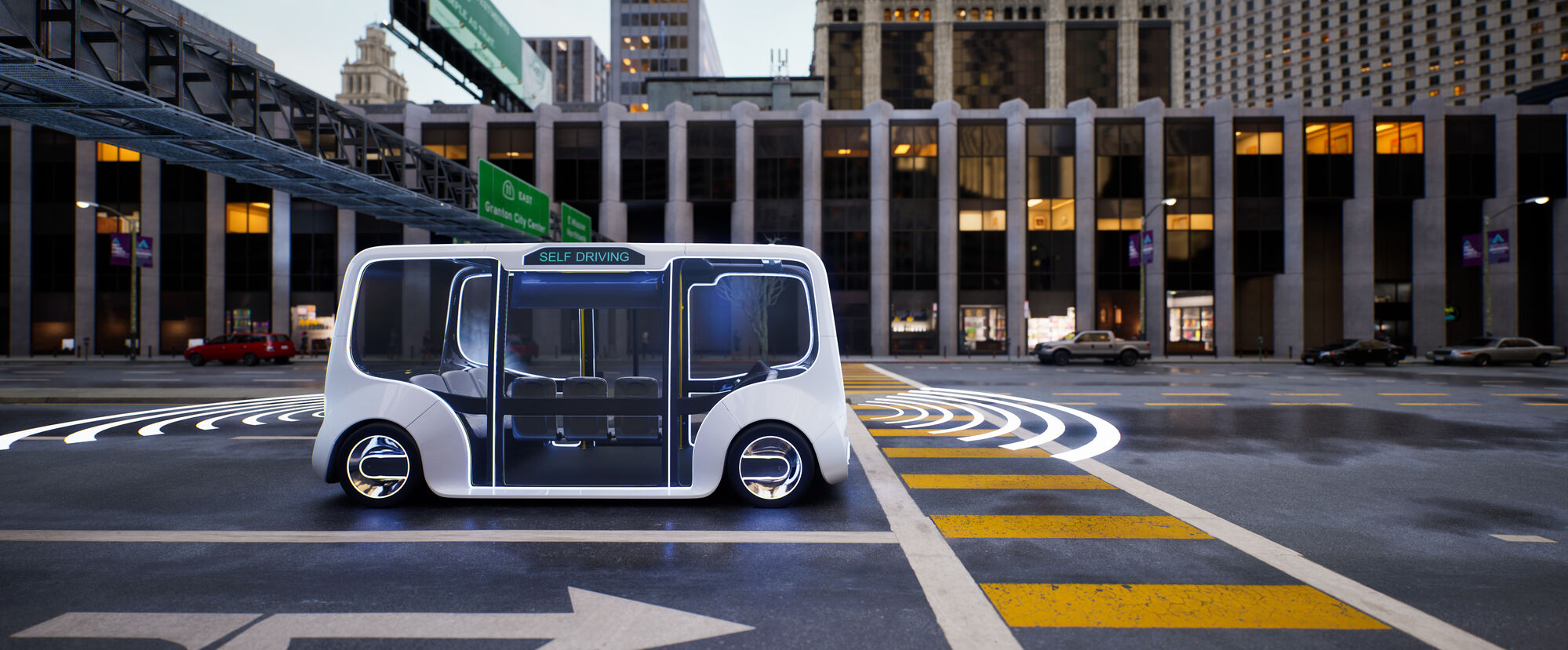
A number of studies show that human error contributes to 90 percent of road accidents, mainly due to driver distraction. Therefore, autonomous vehicles have the potential to reduce the collision rate.
In fact, according to a recent University of Texas study, fully autonomous technology could reduce overall expenses caused by accidents by 40 percent.
Autonomous buses can improve road safety through the use of numerous cameras, radar, mapping and LiDAR software in and around the vehicle. Improving bus safety ultimately decreases operating costs by reducing insurance and accident expenses, in addition to the qualitative effects that improved safety can provide.
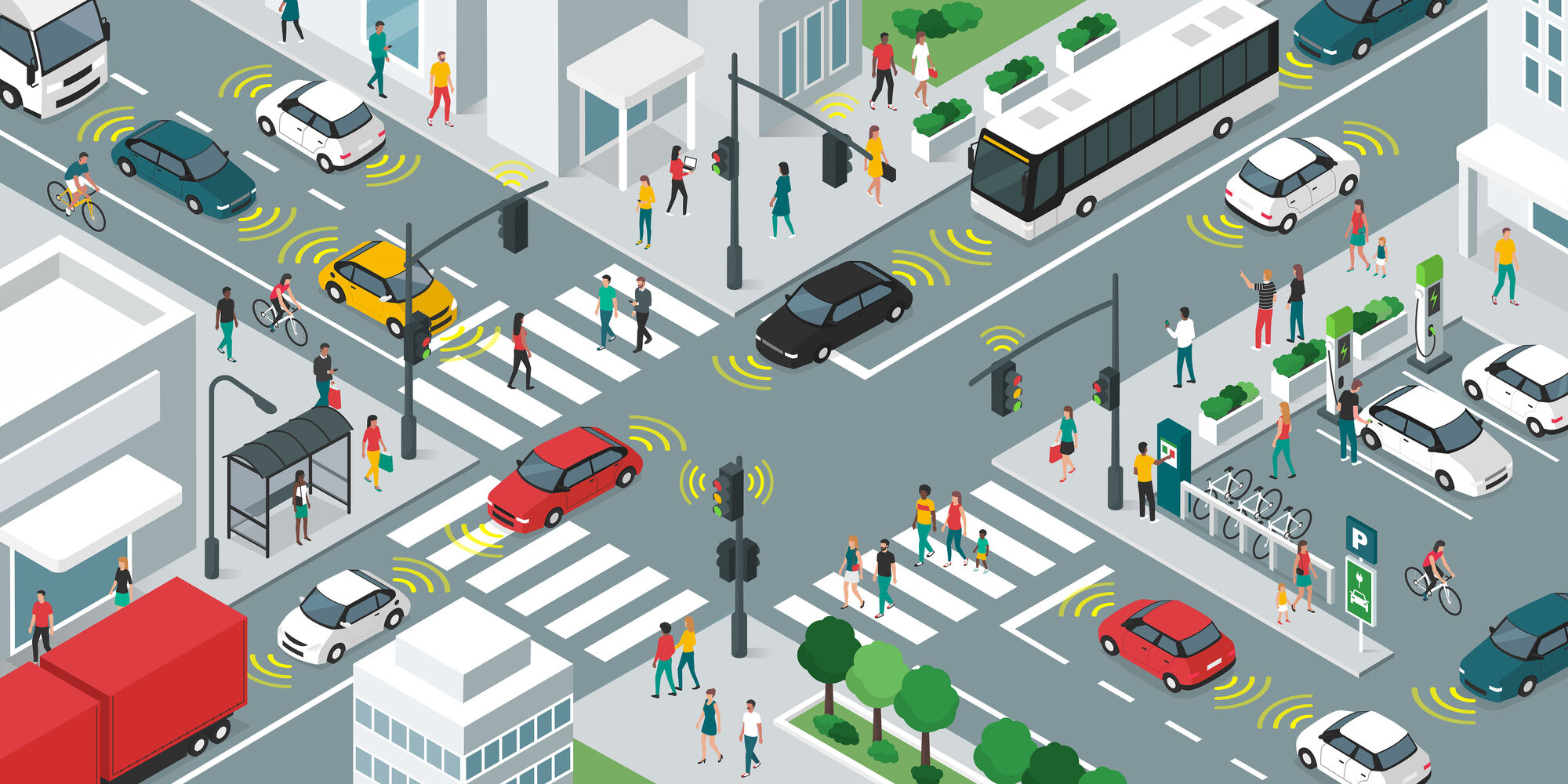
In general, the increased safety features of autonomous buses make the roads safer, helping to reduce the number of accidents. But that's not all!
The deployment of autonomous buses is a big step toward goals to make transportation and mobility greener. The benefits for transport operators and companies go hand in hand with the broader scope of sustainability goals. By reducing emissions, fuel consumption, and improving overall traffic flow, these vehicles help make cities more sustainable and environmentally friendly.
The addition of autonomous fleets to the world of mobility is a powerful tool for influencing the paradigm by which people choose to travel.
This is because the implementation of autonomous vehicles is not limited to traditional public transportation services. That is, they even have the potential to 'patch up' existing holes in the transportation and mobility network, as well as offer more efficient solutions to users.
These 'holes' are typically geographical areas not included in the main transportation network. As a result, users outside this 'core' often rely on their own vehicles (if they can afford it!) to get to where they need to go. Consequently, this imposes many limitations on users depending on their socio-economic and demographic status.
In these cases, transport operators try to supplement their services with the use of Demand Responsive Transport (DRT), also referred to as paratransit, to make it more accessible for users outside the transportation core to get around. In 2023, many of these services will be offered with the use of autonomous vehicles due to their advanced technology and service optimization.
So what are the other types of services that autonomous solutions could cover? Here are some examples:
To connect remote areas to larger transportation stations (airports, train stations) or, more generally, to the transportation system.
Autonomous solutions are already on the road and providing easy access for users with limited mobility to transport them to and from medical appointments.
May Mobility is already well-known in this field. The Michigan startup focuses on first- and last-mile solutions by offering ride-hailing services.
To learn more, we recommend reading this article.
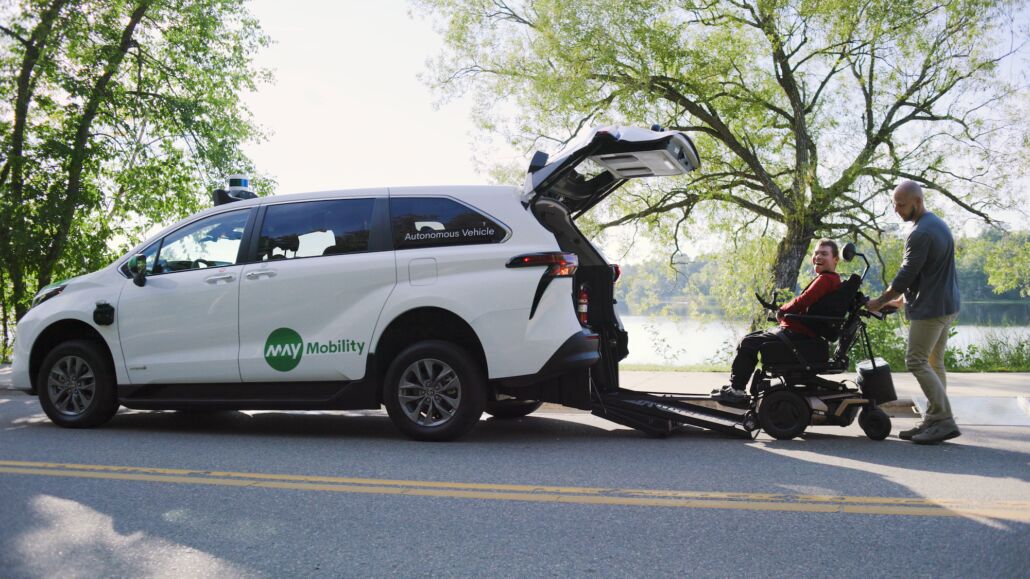
Autonomous fleets provide transport operators the flexibility of service deployment in cases where large groups of people need to be transported in a short period of time (in contexts such as large events or evacuations).
In addition to passenger transport, we have already seen companies like Nuro and Udelv enter the world of delivery services, and with the pace at which autonomous vehicles are being introduced into our lives, it is very likely that we will begin to see other forms of driverless vehicles this year.
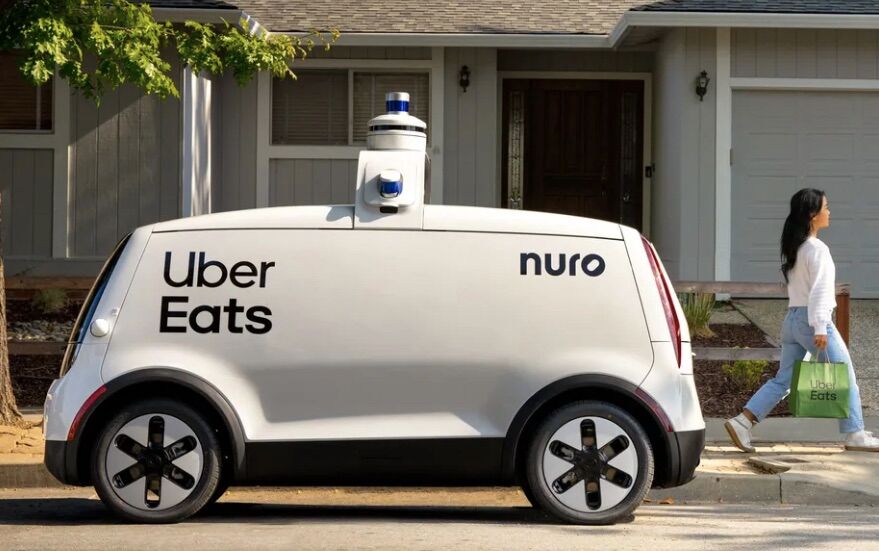
As with all new technologies, autonomous transportation is not without its obstacles and limitations.
First, a more obvious challenge facing society is the issue of replacing jobs and careers with robotic alternatives.
Many professions, such as bus driver, taxi driver, and truck driver, could become obsolete with the advent of autonomous vehicles. Although new jobs could arise to support the development and maintenance of self-driving cars, the transition could be difficult for those who drive vehicles for work.
The driver's role has always involved more responsibility to passengers than simply driving a carrier from point A to point B; a role that no autonomous alternative can yet compete with.
For example, could an autonomous bus ever be successful in the tourist transport sector? If so, we would certainly lose an important component, namely the role of the driver, who plays a key role in this type of travel.
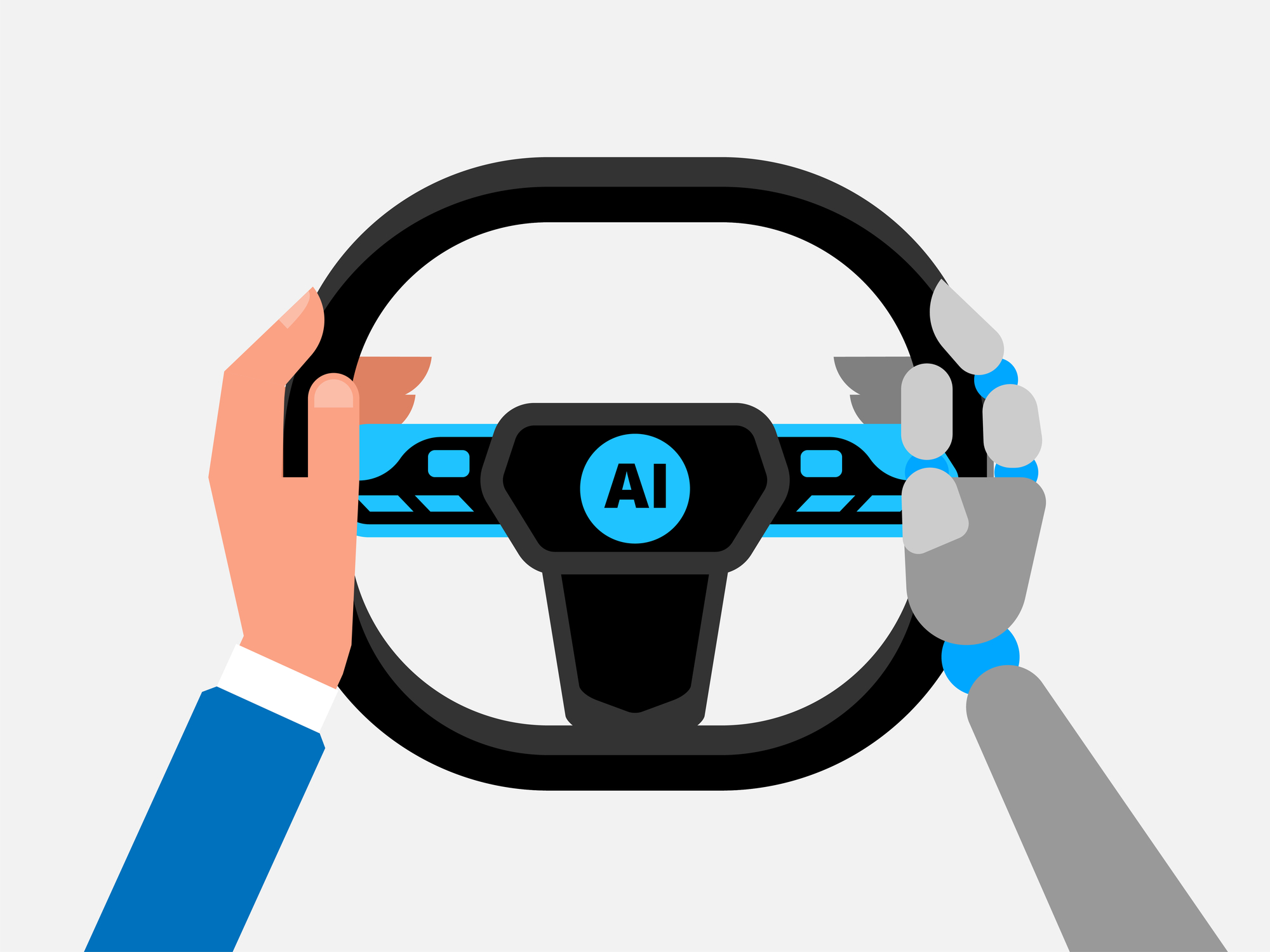
Second, new technology is almost never immune to some failure now and then.
Despite years of research and experimentation, companies making autonomous buses must be on the lookout for possible failures in safety systems. And if mishaps do occur, what would be the level of their consequence?
If a carrier's software or hardware fails, passengers on board could find themselves in a more dangerous situation than with manual driving.
While automated cars may be more efficient and safer, they may not eliminate all the risks associated with driving, especially in situations such as extreme weather conditions or unexpected obstacles.
On top of this, we must also consider the importance of cybersecurity.
As automated vehicles communicate with each other through a shared network, they become vulnerable to cyber attacks, which could cause traffic gridlock as well as serious accidents.
With the growing number of internet-connected devices, the risk of cyber attacks is only increasing, and the security of autonomous vehicles needs to be addressed before they spread to the roads.
Finally, since we are dealing with artificial intelligence, it is necessary to evoke the old philosophical dilemma, namely the trolley dilemma (which, in this case, the driverless bus dilemma):
There is no clear answer to these moral dilemmas. To say the least, programming an autonomous vehicle to make the best ethical decision in a matter of moments is a daunting task.
However, we invite you to read about the recent research by experts at the Technical University of Munich (TUM) who tested the world's first ethical algorithm for autonomous vehicles.
It is truly intriguing how autonomous solutions use cutting-edge technologies to play a crucial role in transportation to make it more accessible to users and offer a greener way of traveling.
In this article, we have seen some examples of the integration of autonomous solutions into the broader mobility network (with AMaaS services) and the various benefits that autonomous fleets could bring to the roads. It will be very interesting to see what new kinds of partnerships will emerge between manufacturers and operators to offer new kinds of creative and flexible solutions to transportation problems.
On the other hand, however, we have also pointed out some of the many limitations and challenges that this new technology poses, for example, the possible economic consequences because of the substitution of a role that a human would normally fill and the reassurance that this technology is reliable.
It is critical that regulators and authorities work together with transportation companies to ensure that the introduction of autonomous vehicles provides the safest and most efficient solution for users.
We want to avoid putting more vehicles on the roads that only exacerbate existing problems, but instead offer a clear and objective solution to optimize the way we travel.
That said, there is no doubt that the vision of having fully autonomous vehicles, or that every vehicle on the road is self-driving, divides general opinion for several reasons.
Tempting as it may be, the image of living with fully autonomous public transportation still seems somewhat far-fetched. Not only that, the sci-fi hysteria may even prevent us from
seeing a clear future on how autonomous solutions can actually improve a public transportation network.
If we continue to put the interests of those who really need reliable transportation first, we are really witnessing the true power of technology when harnessed in the right hands.
So are we really facing the singularity of public transportation? Probably not (for now).

ABOUT SCOTT FRANKLAND
Scott Frankland is Head of Content at Sengerio. His spirit of inquiry leads him to the world of transportation and mobility to connect with the industry’s leading experts and shine a light on the hot topics.

ABOUT EDOARDO ZACCARIA
Edoardo is the Sengerio Customer Success Manager and a passionate climber. His interpersonal skills and ability to build strong relationships have been invaluable in helping customers successfully get the most out of the Sengerio platform.